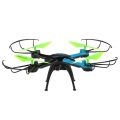Educating and training the employees with the aim to boost the product knowledge and selling skills are key to the success of a business or an enterprise. If one takes a close look at history, most businesses provide classroom training courses to help employees enhance knowledge about new products, which eventually boosts sales. However, with the growth in the business and product profile, one of the key challenge that comes to fore is the ability to build a connect with all the employees constantly.
It is believed that complementing classroom training with strong mobile learningis a potential solution that benefits companies, irrespective of their product offerings and audience profiles. This is one of the key reasons why elearning in India is treated as an effective learning medium. Companies are looking for learning management systems that are able to aligned to the requirements of the learners. A mobile learning platform is considered as the best route to take as it caters to the varying needs of the community that boosts knowledge and confidence.
Although there are innumerable hurdles in the development of robust product training for varied audience section, but few of the common ones that every business should be aware of are –
- It is preferable that the learner profile encompasses people of diverse educational and social-economic backgrounds. The course content should be created understanding the diversity of the audience.
- In India, many learners have limited exposure to the technology-focussed learning. Hence, mobile learning in India should be able to offerinformation in a way that would not overwhelm the learner.
Mobile learning that addresses the learners requirements for efficient product training by following the essential design strategies, which encompasses –
- The focus should be placed upon the minimal text and increased use of graphics. The online learning platform should encompass a voiceover that will support the minimalistic text on-screen.
- Efforts should be made to offer small capsules of knowledge that would be able to maintain the attentiveness of the learners. Every course should not exceed the limit of 15–30 minutes time duration and comprise essential elements – graphics, conversations and audio.
- The course structure should follow a simple structure and aim to lower the total count of clicks. It is important to understand that purposeful clicks allow the learners to increase their concentration on the course content, instead of wasting time on navigational details. In a country like India, mobile learning medium should also use themes and recognisable figures to build a rapport with the audience.
- Realising that varied learners across Indian don’t enjoy 24/7 Internet access, it is best to equip the online learning platforms in India that support slow Internet connections. Availability of a background-buffering feature is capable of ensuring smooth page transitioning.
- The idea to comprise a series of easy to download material along with every eCourse can boost learning, allowing the students to study offline as well.
- When the course is localised into the regional languages, it helps those who have limited knowledge or not proficient in English.
When developed with considerable design strategies in mind, a mobile learning platform can play a key role in the domain of product training.






























No Comments
Leave a comment Cancel